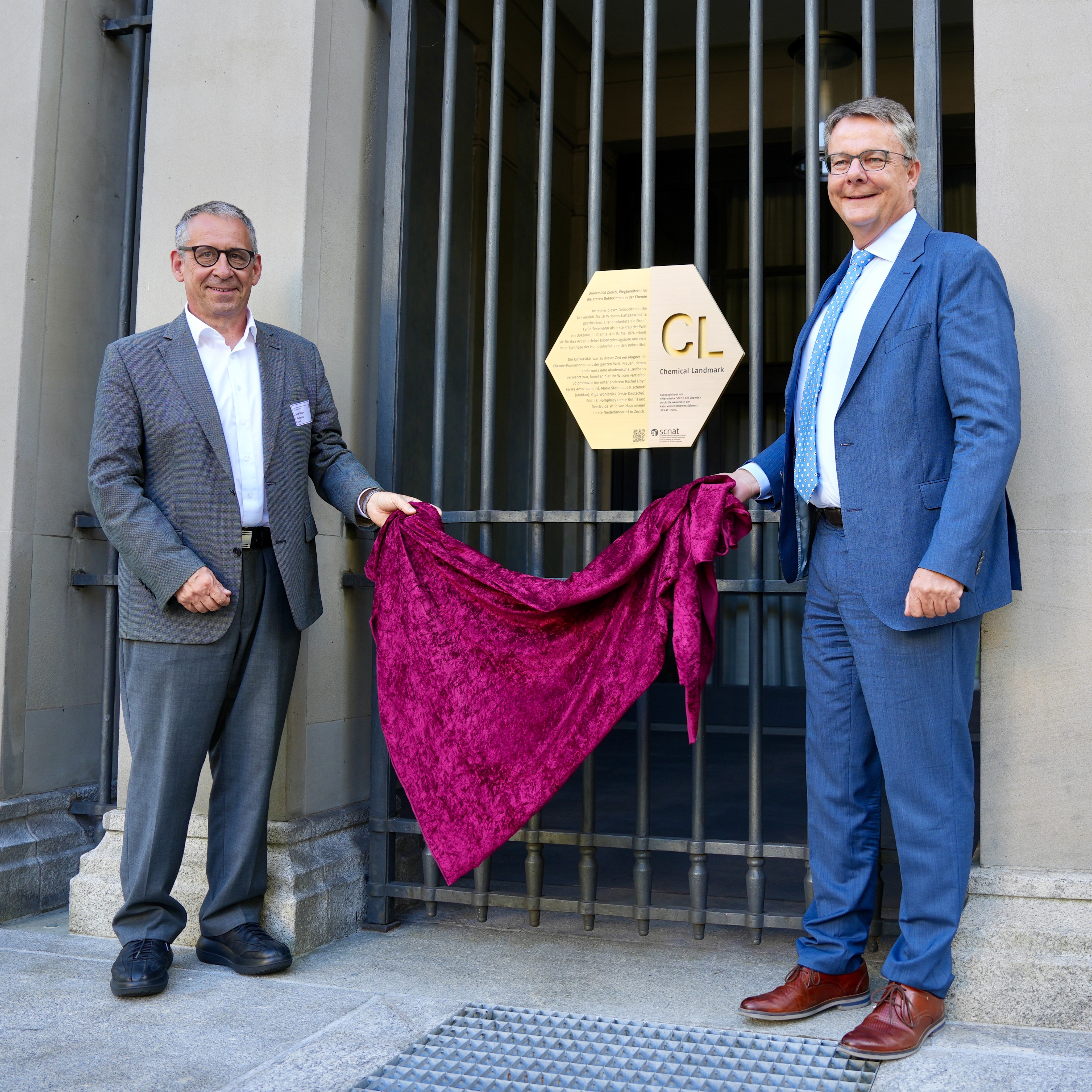 It was the first European university to admit women to the take classes and the first university in the world to award a doctorate to a woman. The Swiss Academy of Sciences has honoured the university with a Chemical Landmark award as a significant historic site for chemistry.
It was the first European university to admit women to the take classes and the first university in the world to award a doctorate to a woman. The Swiss Academy of Sciences has honoured the university with a Chemical Landmark award as a significant historic site for chemistry.
Picture 1: Pioneers at the University of Zurich: The world’s first female doctors of chemistry. Illustration Gregor Forster / Monique Borer
The University of Zurich made scientific history at Rämistrasse 59, where the Institute of Asian and Oriental Studies is located nowadays. More than 150 years ago, in the chemistry laboratory in the basement of the former cantonal school, Lydia Sesemann researched the chemical properties of dibenzyl acetic acid and discovered a new process for manufacturing benzylic acid. Both acids are important precursors in the manufacture of medicines. The University of Zurich’s Faculty of Philosophy awarded the chemist a doctorate for her achievements on 15 May 1874. The “clever Finn”, as she was called by contemporaries, is the first woman in the world to have been awarded a doctorate in chemistry.
 Between science and revolution
Between science and revolution
The Swiss Academy of Sciences (SCNAT) has honoured the University of Zurich with the Chemical Landmark award for its role as a pioneer for the first female doctors of chemistry. This honour is awarded to sites in Switzerland which, through their actions, are historically significant in chemistry.
Picture 2: Unveiling of the commemorative plaque at the ceremony on September 3, 2025. Picture: Andreas Jordi, SCNAT
Dr Sesemann was not the only pioneer. At this time the University attracted female chemists from all over the world. Women who were refused an academic career elsewhere could gain access to and persue their knowledge here. Thus, Rachel Lloyd was the first American to be awarded a doctorate at Zurich in 1886, Olga Wohlbrück was the first German in 1887, Geertruida W. P. van Maarseveen was the first Durch woman in 1897 and Edith E. Humphrey was the first British woman in 1901.
In many countries women were prohibited from traveling without the permission of their father or husband. In order to be able to study in Switzerland, some married hastily or entered in a marriage of convenience. A remarkable number of female students came from Imperial Russia, which was experiencing social upheaval. The women were often politically active and also moved in revolutionary circles in Zurich. In 1873 the Tsar issued a decree that banned Russian women from studying in Zurich. Most of them immediately left the city. Lydia Sesemann, whose native country was at that time part of the Russian Empire, remained and completed her doctoral work. One of her supervisors remarked that her doctoral thesis was undoubtedly one of the Faculty’s best works.
Very few Swiss women
While foreign students were attracted to the University of Zurich and other Swiss universities, initially Swiss women mainly remained outside, because they needed to matriculate in order to study. However, women were not permitted to attend high school in Switzerland. To be admitted to a university in spite of this, they had to attend expensive private lessons and pass an additional admission examination.
The University of Zurich was a pioneer in opening the doors to knowledge and tertiary education for women. Intentional encouragement was still needed, though, until a fair gender balance was achieved. Successful initiatives at European research institutions set an example.
Further information
Leo Merz, Chemistry Platform, Akademie der Naturwissenschaften Schweiz
+41 31 306 93 30, chemicallandmarks.ch
|
SCNAT – network of knowledge for the benefit of society |
David Spichiger, SCS / Leo Merz, SCNAT
08.09.2025
